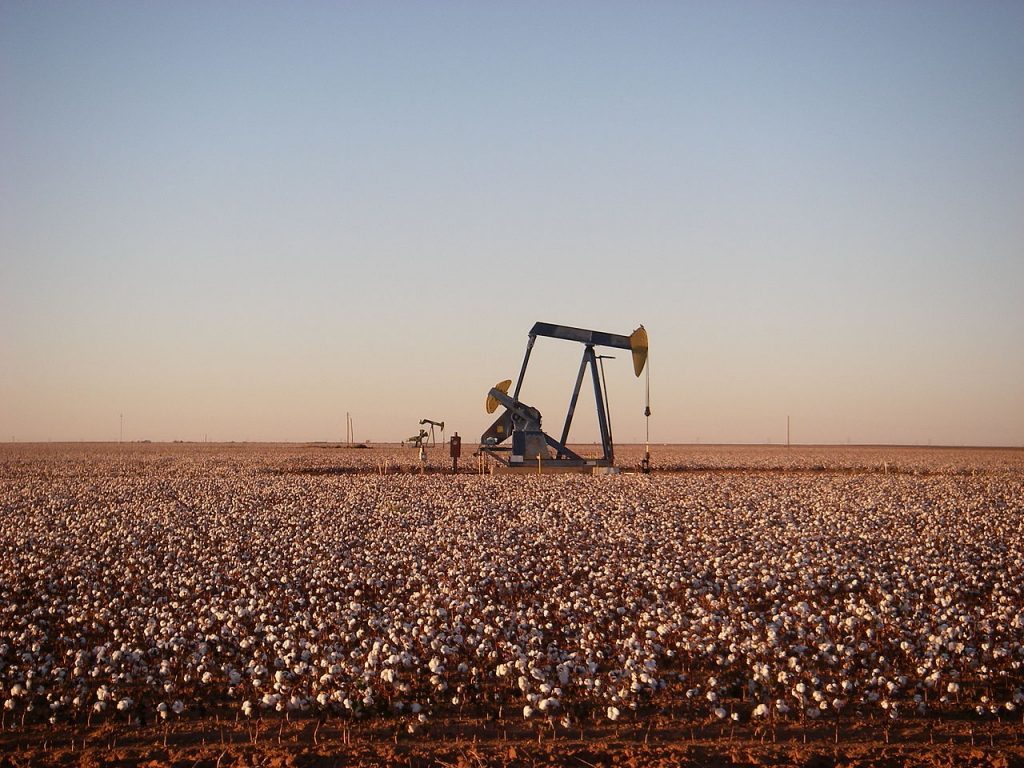
A pipeline shortage that’s leaving gas trapped in West Texas’ Permian Basin means prices for the fuel there are the lowest of any major U.S. hub, wresting that distinction from Appalachia’s Marcellus Shale. Prices for Permian gas, produced alongside oil in the play, have tumbled 30 percent from a year ago, while output rose to a record.
All that production is creating a dilemma for drillers, who may be forced to curtail oil output if they can’t get their gas to market. Producers can burn off some of the gas — a process known as flaring — but state regulators typically won’t allow that to happen indefinitely. And as mild spring weather limits demand for the heating fuel, explorers may be giving their gas away, according to broker Ion Energy Group LLC.
In the next three to four weeks, “natural gas prices in the Permian can go to zero because it’s literally a byproduct,” Kyle Cooper, consultant for Ion Energy in Houston, said by telephone. “There’s so much gas coming the system really pushes and fights to get it out.”
The low-cost crude oil reserves buried in the Permian’s layers of shale have drawn explorers in droves, but roughly a third of the output from those wells is gas, according to RS Energy Group. As gas production from the play surges, however, pipeline capacity has failed to keep pace.
One emerging outlet for the glut: Mexico. Demand for the fuel has jumped in the nation’s newly deregulated electricity market as a raft of new gas-fired power plants are built. And while companies from Sempra Energy to TransCanada Corp. are developing conduits to shuttle gas from Texas to Mexico, several of those projects are facing delays south of the border, often due to opposition from indigenous groups.
Volume on pipes to Mexico “looks to be very light,” Colton Bean, director of midstream research at Tudor Pickering Holt & Co., said by telephone. “The issue is you haven’t necessarily built out the in-country connectivity on the other side of the border.”
For more on delays to Mexican gas pipelines, click here
Another factor working against Permian producers: the calendar. Gas for delivery at the Waha hub in West Texas has already slid 13 percent so far this month to trade at $1.84 per million British thermal units Tuesday, a 29 percent discount to supplies of the fuel at Louisiana’s Henry Hub, the benchmark for U.S. futures. And the Permian rout will only deepen in the coming weeks as mild spring weather curtails heating demand and wind generation picks up, displacing gas-fired power plants, Cooper said.
Permian gas could average $1.85 per million British thermal units this year, Tudor Pickering analysts wrote in a March 6 research note. But on some days, it could go to zero or even turn negative, according to Cooper.
The current discount at Waha is “clearly already reflecting the concern that people can’t easily get all the Permian natural gas out to other markets,” he said.
Pipeline developers including Kinder Morgan Inc. are proposing new conduits to ease Permian bottlenecks and transport the fuel to demand centers. But relief won’t come immediately: Kinder’s Gulf Coast Express, a $1.75 billion line connecting the basin to eastern Texas, is slated to begin operations in October 2019.
Tellurian Inc., which is developing a gas export terminal in Louisiana, announced an open season on March 20 for a 625-mile pipeline from West Texas to Louisiana. That project may begin service in 2022.
Drillers like Apache Corp. have moved to insulate themselves from the Permian gas collapse by hedging output and locking in long-term supply contracts. The company, along with Pioneer Natural Resources Co. and Exxon Mobil Corp.’s XTO Energy Inc., has signed up for capacity on Gulf Coast Express.
“Apache anticipated these market dynamics at Waha and proactively entered into basis hedges, long-term gas sales contracts and firm transportation commitments out of the Permian,” said Brian Freed, the company’s senior vice president for midstream and marketing. “These measures provide flow assurance and protection of our price realizations and cash flow through mid-2019.”
But until new pipelines enter service, the risk of Permian production cuts looms.
“The ultimate downside scenario is you have to effectively slow down on your oil production because you can’t evacuate gas from the basin,” Bean said.
As pipelines continue to get crowded, some drillers are likely to boost production of compounds extracted from gas, such as ethane used to make plastic. The problem of limited space isn’t nearly as dire on conduits for those so-called gas liquids.
Targa Resources Corp. announced an expansion of one such pipe in the Permian Wednesday.
“You could see a situation where you ramp up ethane extraction quite a bit,” Bean said. They would ship that separately “rather than have it take up space on a gas pipeline.”
Recommended for you
